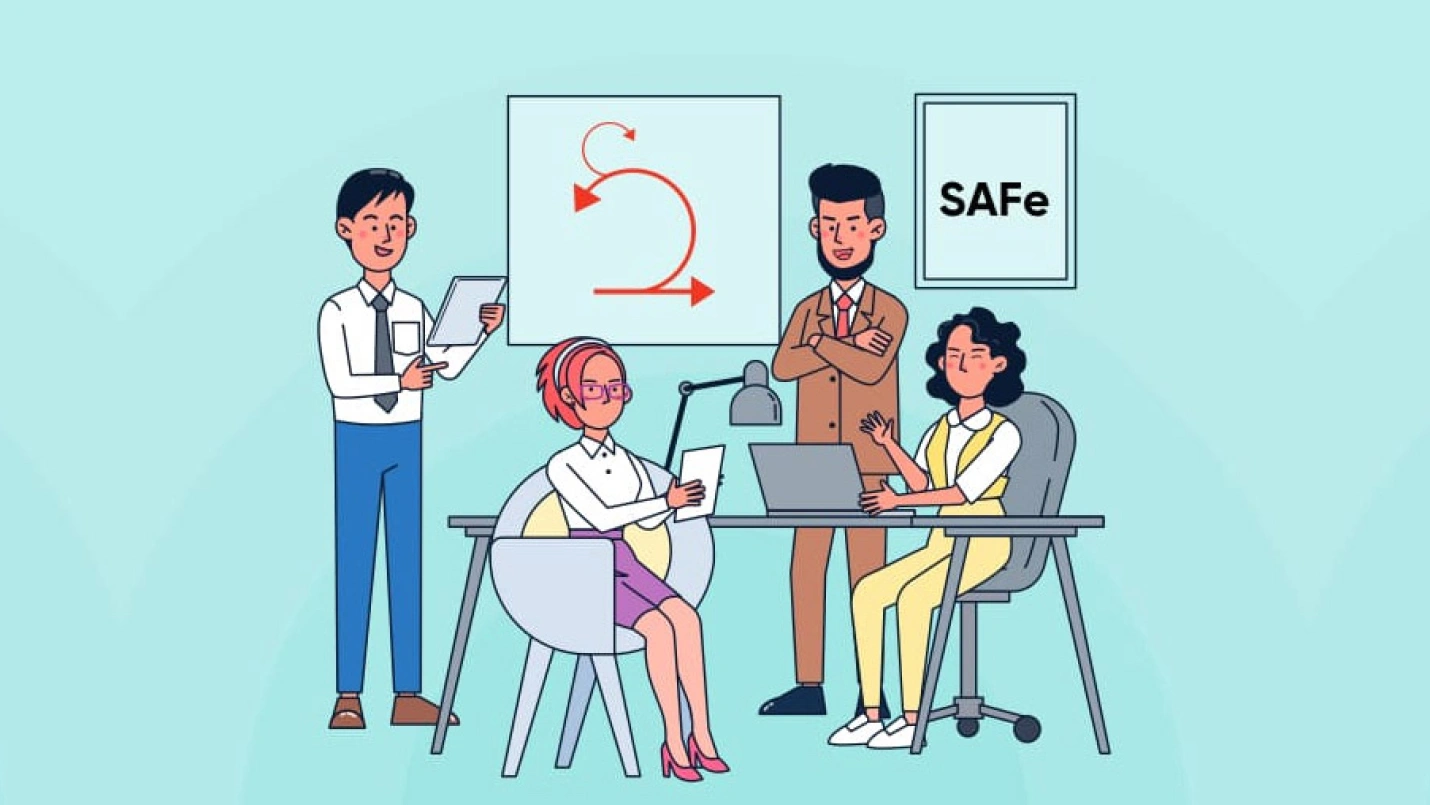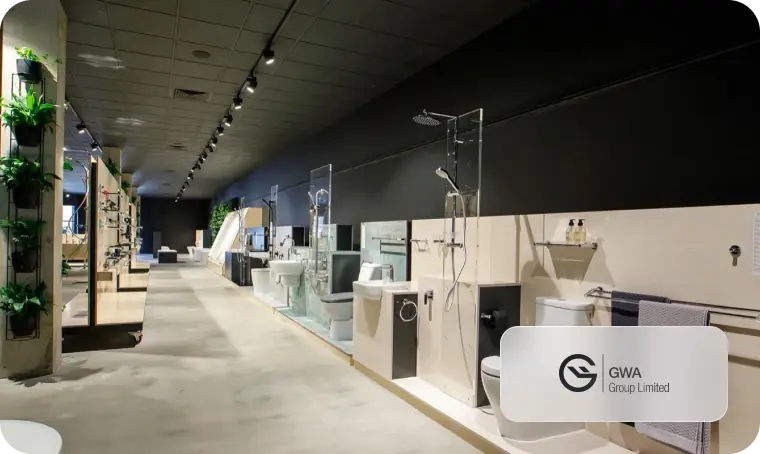Summary: The key to a successful agile transformation is to evolve with your business. Agile may work for you in the beginning. However, as your business grows, you would have to switch to a more flexible, holistic approach like a scaled agile framework (SAFe). Know what SAFe is, how it differs from agile, and how it can help you make the most of your business.
Agile is an effective approach, but it only works for small and mid-sized organizations. As your organization grows, it needs a more holistic and flexible approach to eliminate the loopholes in large-scale, complicated software development projects.
That’s where SAFe, Scaled Agile Framework, comes into the picture. This innovative enterprise agile framework combines the values of Agile, Lean, and System Thinking to improve time to market, collaboration, quality, and, in turn, overall productivity.
According to the 14th State of Agile Report, 35% of the respondents (over 40,000) continue to use SAFe, making it the most popular scaling method for software development.
Let us understand more about SAFe and why it is an ideal choice for enterprises.
What is SAFe (Scaled Agile Framework)?
Scaled Agile Framework for enterprises is a knowledge base that combines agile practices, system thinking, and a lean mindset to help build large and complex software. It is an ever-evolving knowledge base that gets updated from time to time.
With the SAFe model, you can expect to build large and complex systems while ensuring timely delivery and quality.
SAFe History
Scaled Agile Framework (SAFe) was introduced in 2011 by Dean Leffingwell and since then has been the most popular software development framework across large-scale organizations. According to Scaled Agile, a provider for SAFe, 70% of the US Fortune 100 companies have already adopted this innovative framework.
Difference Between Agile and SAFe Framework
Many organizations and enterprises confuse Agile and SAFe frameworks. Here’s a table that can help you understand how the two differ.
| Who is it for | Startups and mid-sized companies | Enterprises |
| Suitable for | Small teams working on a small project | Enterprises working on large-scale product development |
| Based on | Agile Manifesto | Agile Development, Systems Thinking, Lean Product Development |
| Teams | Small | Organizational-level |
| Principles and Values | 4 values and 12 principles | 4 values and 9 principles |
Why Scaled Agile Framework?
It gets challenging to develop enterprise-level applications with Agile. The complexity of the project and the large development teams are better manageable with Scaled Agile Framework. That is another reason SAFe is also defined as “scaling of Agile.”
Agile Manifesto has been helping software development companies by offering values and principles for making their initiatives successful. Agile teams provide flexibility and speed by sticking to the product mindset over the project mindset. However, it suits the needs of smaller teams.
Scaled Agile Framework works for enterprises supporting distributed and large teams that build complex software. SAFe lets organizations embrace disruptive innovation by guiding your way to successful execution in a quick and organized manner.
The business results of adopting the Scaled Agile Framework for enterprises include
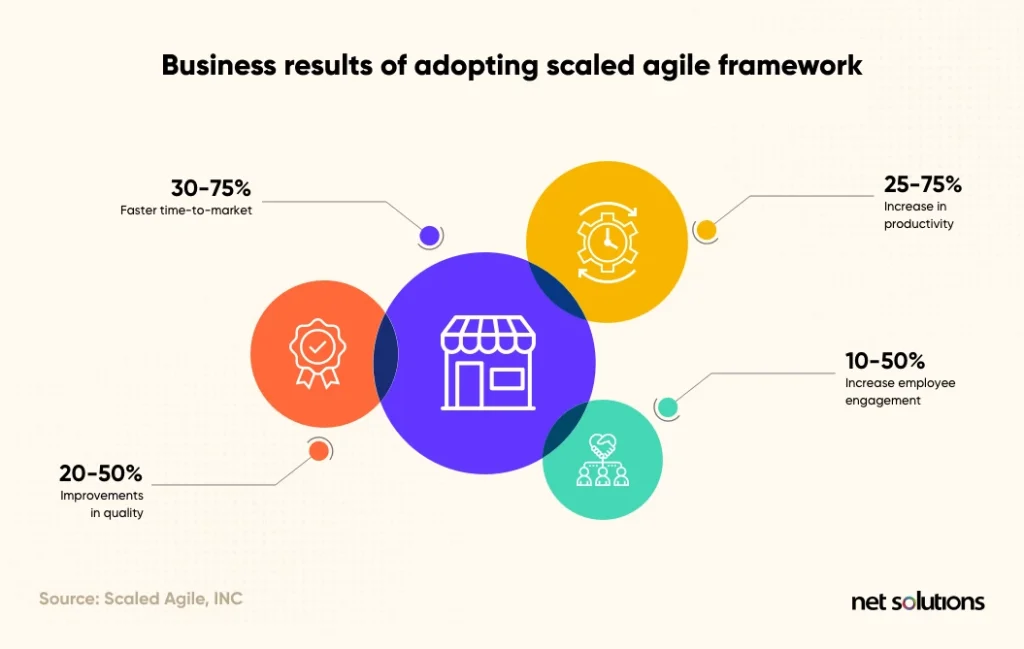

We respect your privacy. Your information is safe.
Three Building Blocks of SAFe
The SAFe model takes inspiration from Agile development practices, lean product development, and system thinking. It picks the best features from the underlying concepts to build a more innovative, workable, integrated framework.
1. Agile Development
The four values and twelve principles of the Agile Manifesto have been a guide for software developers for a long time. It was initially introduced to “undo the damages that the waterfall had done.”
The breakthrough feature introduced by agile is iteration — the ability to move to and fro at any stage of the product development process.
SAFe extracts the culture and collaborative team-based efforts that Agile promotes.
2. System Thinking
System thinking views the system as an interrelated set of elements. System thinking focuses on the amalgamation of two systems — one built for the greater benefit of the customer and the second representing the organization that builds it.
SAFe extracts the mindset that the teams, resources, and business units work in tandem toward product development initiatives.
3. Lean Product Development
Lean product development combines the best of product development practices and lean thinking. The origins of Lean Product Development are Total Quality Management and the Toyota Production System.
The essence of Lean Product development:
The continuous evaluation of existing processes to eliminate waste and delays. — Taiichi Ohno
The principles of Lean Product Development include:
- Understand the product development process from ideation to launch
- Respect for people that work for the product and the culture they work in
- Maintain a cadence of the underlying steps of product development
- Build and release an MVP for receiving faster feedback to eliminate waste and offer value
- Follow the principles of Kaizen, a culture of continuous improvement
- Take the front seat and follow lean-agile leadership to ensure quality and quick delivery
SAFe extracts the lean mindset to eliminate waste while focusing on quick and quality delivery by following all the principles mentioned above.
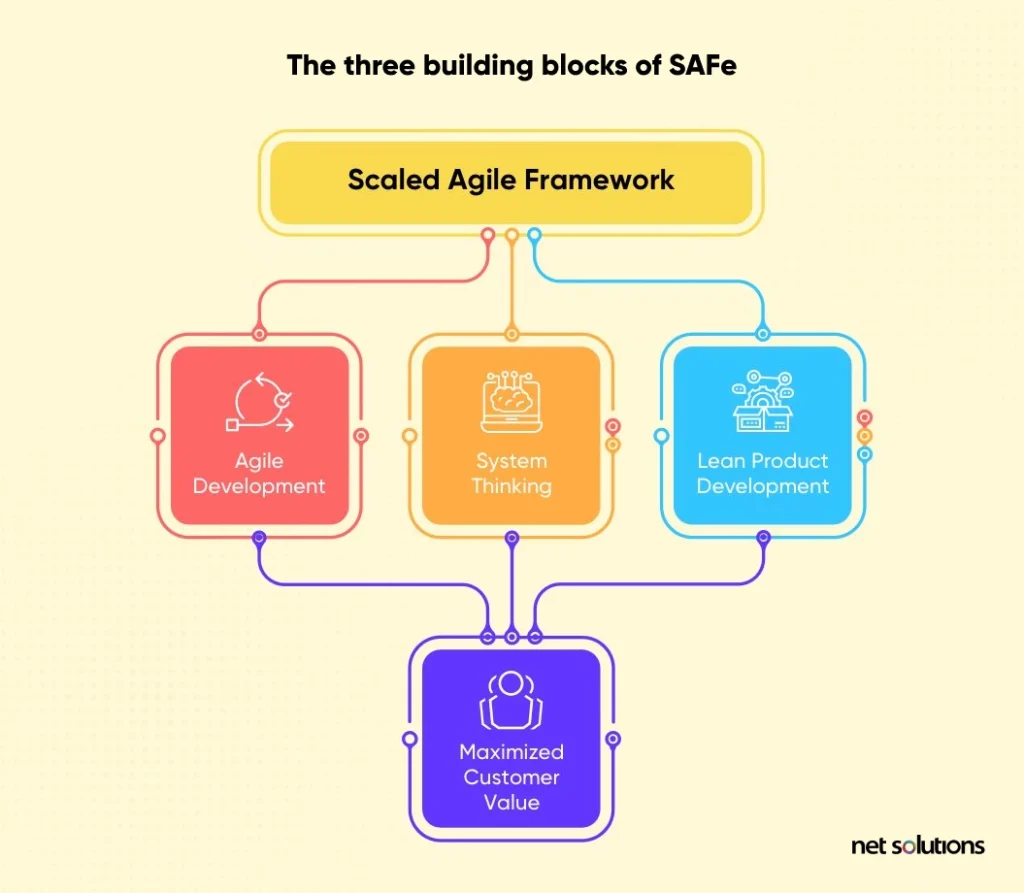
What are the Four Levels of Scaled Agile Framework?
There are four levels or configurations of SAFe, i.e., essential SAFe, Large Solution SAFe, Portfolio SAFe, and Full SAFe. Let us discuss each of them in detail.
- Essential SAFe: This is the basic-level configuration of the scaled agile framework and provides limited elements that offer the most benefits. The ground-level configuration acts as a foundation for all the other configurations.
- Large Solution SAFe: This is a suitable solution for large-scale and complex applications and works independently of the portfolio level. This level facilitates coordination and synchronization for transparency and an organized workflow.
- Portfolio SAFe: This configuration aligns the portfolio’s initiatives with the overall solution strategy of the enterprise. It also helps define strategy and investment funding for the portfolio’s value streams. Also, it offers lean governance and Agile portfolio operations for the teams involved.
- Full SAFe: This is an extensive-level configuration that includes all the capabilities to develop large-scale, complex, and integrated solutions as a part of the team programs. This level is most suitable for teams involving hundreds of people working on a solution that requires developing and maintaining numerous processes.
What are the Five Core Values of SAFe?
The Scaled Agile Framework core values ensure that everyone involved in the project understands how to behave and act to ensure effective and timely delivery. Let’s discuss each of them in detail.
1. Alignment
Like cars out of alignment, misaligned companies can develop serious problems. They are hard to steer and don’t respond well to changes in direction. Even if it’s clear where everyone thinks they’re headed, the vehicle is unlikely to get them there. — © Scaled Agile, Inc.
This value of the Scaled Agile Framework promotes the collaboration between management and teams so that all the efforts are driven toward customer satisfaction. Alignment helps respond to change and maintain a competitive edge while managing work across geographically distributed teams.
It is about preserving the process’s cadence while ensuring everyone is on the same page and understands the system’s ins and outs.
2. Built-in-Quality
SAFe includes built-in-quality practices to ensure that all the increments or microservices of the overall product adhere to the quality standards. In simple words, SAFe believes in embedding quality at every stage of the development process instead of adding it later.
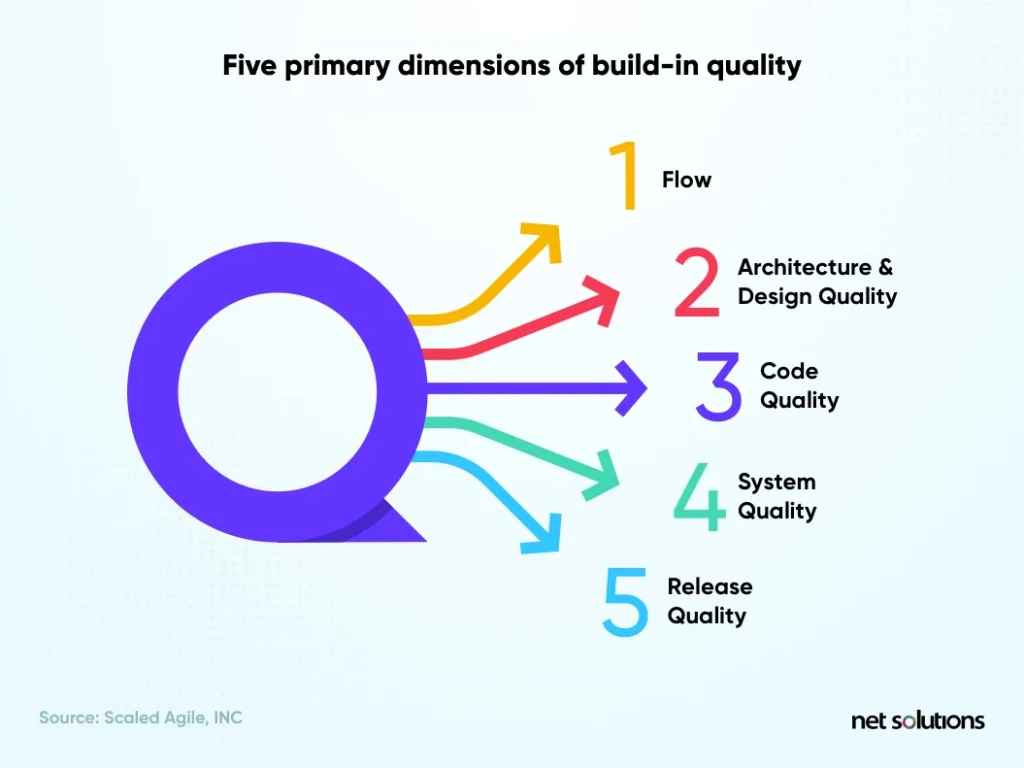
3. Transparency
Miscommunication can easily seep into the product development teams. This, in turn, leads to delays, waste of resources, and mismanaged priorities. Transparency is required to mitigate the effect of such failures, which, in turn, builds trust. If the teams communicate regularly and maintain clarity of facts, everyone can confidently rely on each other and prove productive.
4. Program Execution
To ensure timely and continuous delivery, the Scaled Agile Framework relies on Essential SAFe. It comprises manageable roles, sprints, and artifacts as a part of the Agile Release Train (ART), which offers guidelines to streamline program execution. These guidelines include team and technical agility (skills and guidelines for teams), Agile product delivery ( focuses on customer needs), and lean-agile leadership (focuses on how leaders motivate and empower teams).
5. Leadership
Active lean-agile leadership support is also essential besides the above-mentioned four core values. Only leaders can change the system and encourage a continuous learning environment to create customer value. Without strong leadership, your SAFe, agile initiative will fail to embrace all core values and fall like a house of cards.
Scaled Agile Framework Principles
The SAFe framework relies on some fundamental principles based on agile and lean principles. Here’s an insight into each of them:
1. Take an Economic View
The organization and the teams should understand the economic impact of decisions they make in the earlier stages of the scaled agile development. The principle implies that any business should consider economics to make informed decisions at all stages.
2. Apply System Thinking
The system thinking principle ensures that all aspects of the system and its environment are applied to the software development lifecycle stages. There are three aspects to system thinking: the solution is a fully-fledged system, the enterprise building the system is a system in itself, and how the whole process helps optimize the entire value stream.
3. Assume Variability; Preserve Options
According to this principle, technical and market variability exist throughout the development process. Ignoring variability altogether is the wrong solution for the development practice. Instead, the goal should be to predict and accept variabilities and manage them while preserving options by following the set-based design approach.
4. Build Incrementally with Fast, Integrated Learning Cycles
This principle implies that the solution should be built incrementally over a series of agile scrums similar to Agile Development. Every sprint should result in a workable part of the system, i.e., following a microservice architecture. All the microservices, when combined, should be able to build a comprehensive system.
5. Base Milestones on Objective Evaluation of Working Systems
According to this principle, all the stakeholders involved should collaborate to analyze the economic benefits of the process throughout the development lifecycle. This is to ensure that the said solution offers value and economic benefits.
6. Visualize and Limit WIP, Reduce Batch Sizes, and Manage Queue Lengths
Any product under development aims to steer clear of roadblocks while maintaining a continuous flow of processes. This can be done by visualizing and limiting work in the process, reducing the batch size of the requirement, design, implementation, conducting testing phases, and reducing queue lengths to ensure timely delivery.
7. Apply Cadence, Synchronize with Cross-Domain Planning
According to this principle, cadence, synchronization, and cross-domain planning are needed for quality system delivery. Cadence ensures that the flow of events is systematic so that everything stays on track and follows a pre-decided routine. Synchronization ensures that different system parts are understood, analyzed, and integrated smoothly. And cross-domain planning offers the opportunity to integrate and test business and technical solutions of the system.
8. Unlock the Intrinsic Motivation of Knowledge Workers
According to this principle, all knowledge workers should be continuously encouraged and motivated to perform better. This can be done by understanding that money or incentives are not sole employee motivators; instead, the leaders need to motivate by giving purpose and minimal possible constraints while respecting the opinions of everyone across the teams.
9. Decentralize Decision-making
According to this principle, delivering value in the speculated time frame is only possible with decentralized decision-making. When the decisions depend on the higher authorities, who often lack clarity due to limited local context, there are chances of a drop in their quality.
Moreover, if the waiting period for a go-ahead from the concerned authority is long, the facts on which the decisions need to be taken can either become redundant or completely change owing to the time lag. Thus, decisions should be decentralized (except decisions that are infrequent, permanent, and offer economies of scale) to improve the overall product development flow.
10. Organize Around Value
In today’s world, product development efforts are labeled successful if they can respond to change promptly and offer value. To achieve this agility, enterprises must organize the work culture around standard values. When the customer and market demands change, the enterprise can quickly adapt to the new requirements around the organized flow of values.
12-Point Checklist for Implementing SAFe
Scaled Agile, Inc. has introduced a SAFe implementation roadmap for a safe SAFe transformation.
Here is the SAFe implementation roadmap:
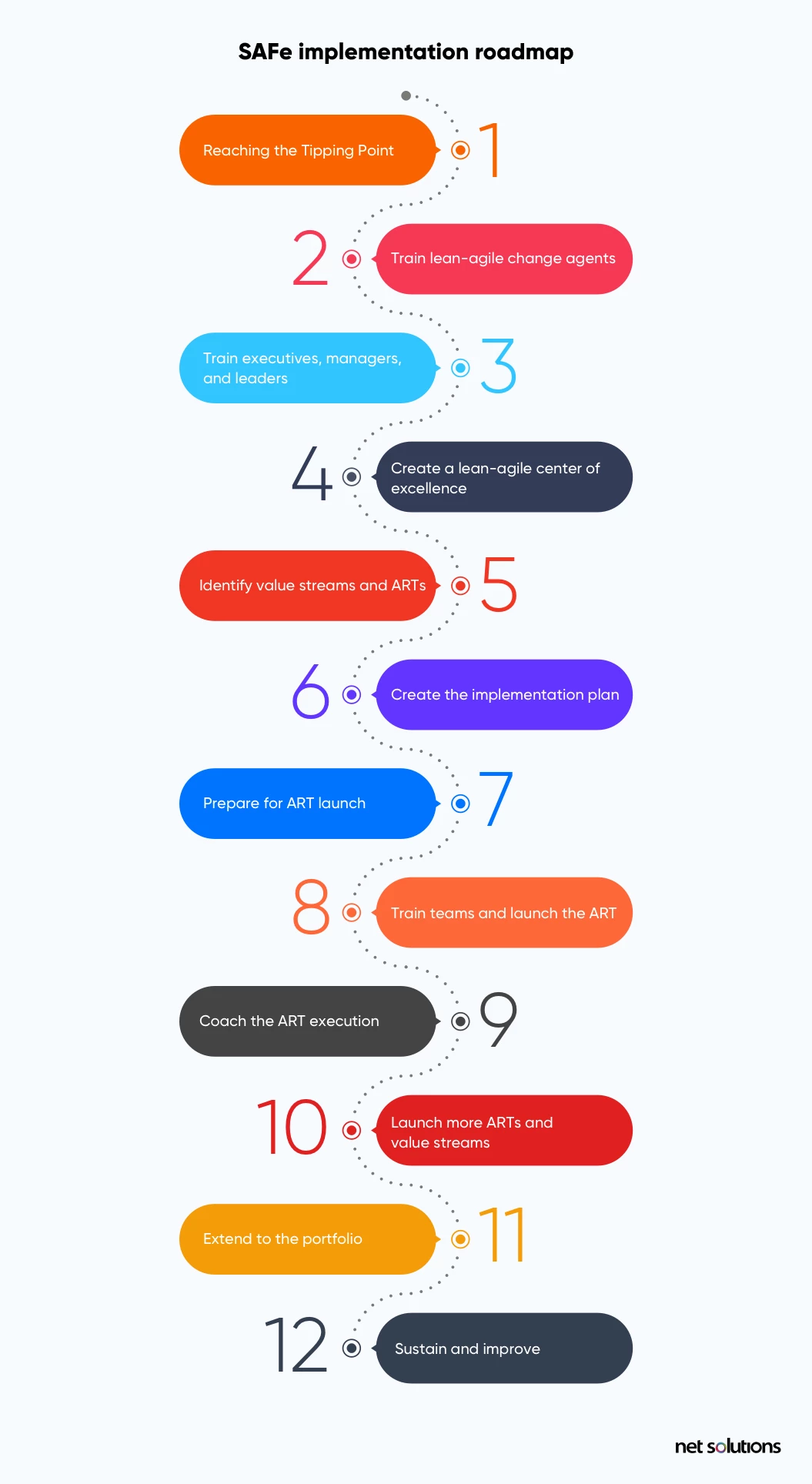
Scaled Agile Framework Benefits
Implementing a Scaled Agile Framework means better project management at an enterprise level. It helps untangle the complexities of product development by offering principles and values for execution. The benefits of the Scaled Agile Framework include:
1. Enhanced Quality
A scaled agile framework provides the flexibility to innovate by reducing the roadblocks in the path towards execution. The quality of the software depends on customer satisfaction. With SAFe, you can expect to:
- Reduce the number of bugs
- Decrease warranty expenditure
- Increase client and user satisfaction
2. Increased Productivity
SAFe promotes collaboration and engagement among teams by breaking the silos across the organization. Everybody is productive and contributes equally to the ultimate goal, making Scaled Framework a preferable framework for distributed agile teams. With SAFe, you can expect to:
- Increase the overall quality of the product
- Boost cross-functional culture across the organization
- Reduce iterations and defect rate
3. Streamlined Product Execution
SAFe offers a set of values and principles that bring cadence to the development process. From planning to execution, everything falls into place, leaving no loopholes behind. The upshot of all this is a reputed organization that stands true to its promise of quality and timely delivery. With SAFe, you can expect to:
- Pre-plan the project delivery timeline
- Ensure timely delivery
- Create a positive net promoter score from the business
4. Process Transparency
SAFe product development helps maintain transparency, which builds team trust. Once there is trust — performance, motivation, innovation, and continuous improvement become evident. With SAFe, you can expect to:
- Keep the expectations realistic and manageable
- Improve trust among the teams
- Provide insights into dependencies and risks in advance
SAFe vs. other scaled agile frameworks
Many large enterprises favor SAFe over other agile practices. Still, a few other agile frameworks have been getting popular recently. Understanding the core difference between SAFe and these frameworks can help you make the right decision. Let’s compare these agile frameworks with SAFe:
1. SAFe vs. Scrum@Scale
A network of scrum teams come together to form an ecosystem in the Scrum@Scale approach. The idea is to create an extensive network of scrum teams so that the team can quickly scale up without having to introduce new process dynamics or change the existing roles.
For example, if you have a large product with 25 scrum teams working on it, one scrum of scrum (SoS) may not be enough, and you may need to be creative by organizing a Scrum of Scrum of Scrums (SoSoS) with a Scrum of Scrum of Scrums Master (SoSM).
Scrum@Scale is less prescriptive yet answers an essential question, i.e., Will your productivity suffer or your performance increase if you add more people to your team?
Here’s when it’s wise to use the Scrum@Scale approach:
- You have an object-oriented technology stack
- Your team operates on product-centric values and with minimum bureaucracy
- The executive team wants to practice scrum and remove roadblocks for the organization
- You don’t need an agile or Agile Lifecycle Management (ALM) tool until practices are second nature
2. SAFe vs. Large-Scale Scrum (LeSS)
Compared to SAFe, Large-Scale Scrum (LeSS) takes the minimalism route to roles, structure, and artifacts. Also, where SAFe offers four configurations to accommodate teams of greater size and increasingly complex solutions, LeSS provides two configurations, i.e., LeSS for two to eight teams and LeSS Huge for more than eight teams.
Another significant difference between SAFe and LeSS is their stance on software development. In LeSS, product owners have complete content authority, while SAFe follows a democratic approach. Moreover, compared to SAFe, which emphasizes many factors, LeSS focuses more on customers.
Despite the differences, SAFe and LeSS are similar on many fronts. Both emphasize systems thinking, lean thinking, and similar guiding principles. However, LeSS focuses heavily on continuous improvement and waste reduction across the organization.
Here’s when you should use Large-Scale Scrum (LeSS):
- Your team has mastered Scrum.
- The leadership team is willing to restructure and experiment for the greater good.
- There’s alignment on the definition of the product and done.
- You have active support from external coaches and mentors.
- The organization wants to get rid of the project management paradigm completely.
3. SAFe vs. DA
Disciplined Agile (DA) is a toolkit to help organizations decide what way of working makes the most sense. It offers lightweight, agile governance rooted in Scrum and Kanban and transformation knowledge in HR and finance, governance, DevOps, and portfolio management. In DA, we situationally employ different scale levels for each project and emphasize decision-making enablement to help guide strategic direction.
Here’s when it’s wise to use the Disciplined Agile (DA) toolkit:
- Your organization wants to remain flexible and define its scale agile paths.
- The organization wants to preserve the process and framework choices
4. SAFe vs. Spotify Agile Model
The Spotify agile model was never intended to be a model or framework in the first place. It was a people-driven, autonomous set of practices for coordinating Agile teams that got so popular that many organizations started adopting it.
Spotify emphasizes self-organizing, cross-functional, and co-located teams called “squads” (the equivalent of a scrum team). Although SAFe doesn’t place necessity on the co-location of teams, it is encouraged for PI planning.
The squads are further organized into larger units called tribes. Squads are not much dependent on each other, and if there are dependencies, they’re handled through Scrum of Scrums. Knowledge sharing happens through chapters, guilds, and informal groups organized based on skill sets and interests.
Here’s when you should use the Spotify agile model:
- The organization emphasizes learning, allowing for mistakes, and taking controlled risks
- Your team and product and teams are loosely coupled and closely aligned to avoid dependency conflicts
Is SAFe the right choice for your company?
Just because SAFe works for many enterprises doesn’t mean it will also work for you. There are many things you need to keep in mind before you decide whether to use SAFe or not. Let’s begin:
Which Companies Use SaFe?
1. Cisco
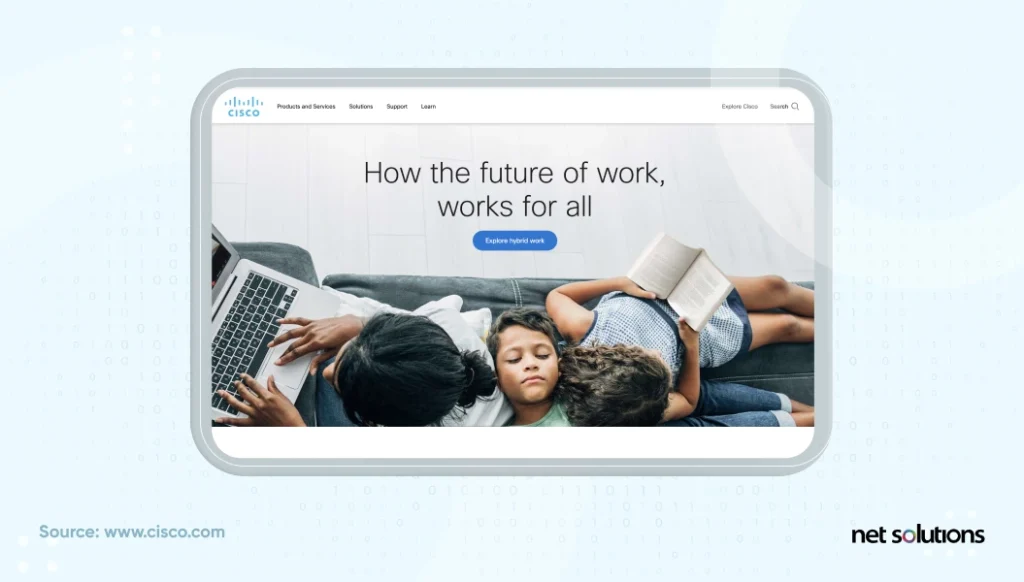
Cisco’s Subscription Billing Platform was initially designed on the waterfall model, which slowed development, defects, extended-release cycles, and missing delivery pipelines. After adopting SAFe, the organization has reduced defects by 40% and improved its defect removal efficiency by 14%.
2. Fitbit
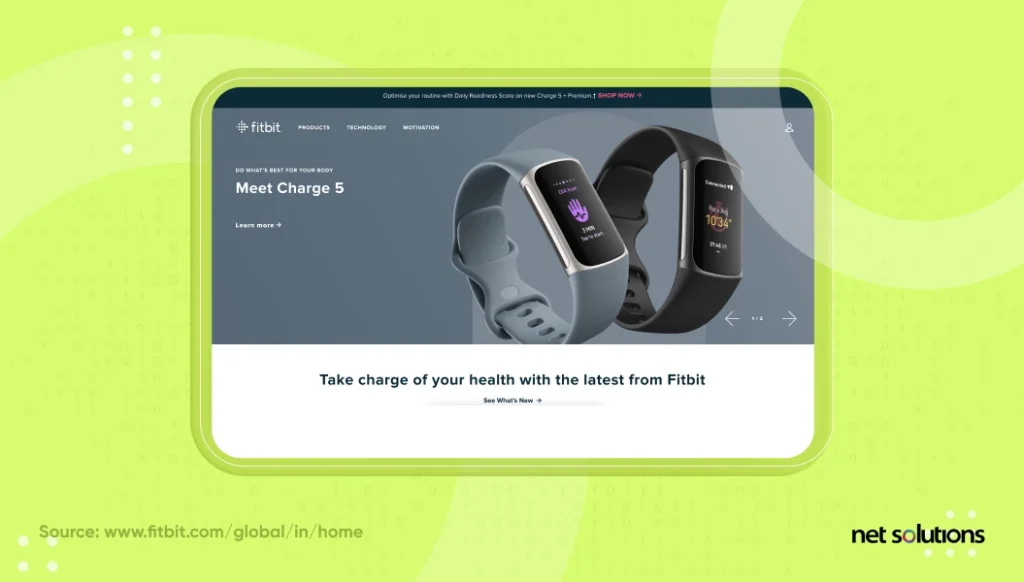
Fitbit has been using the Scrum approach to meet its rigid consumer holiday-driven product delivery schedule. However, as the company’s customer base grew, it needed to scale its process. That’s when Fitbit implemented SAFe, released four new products, and shipped more than 22 million devices thanks to its successful scaling effort.
3. Royal Philips
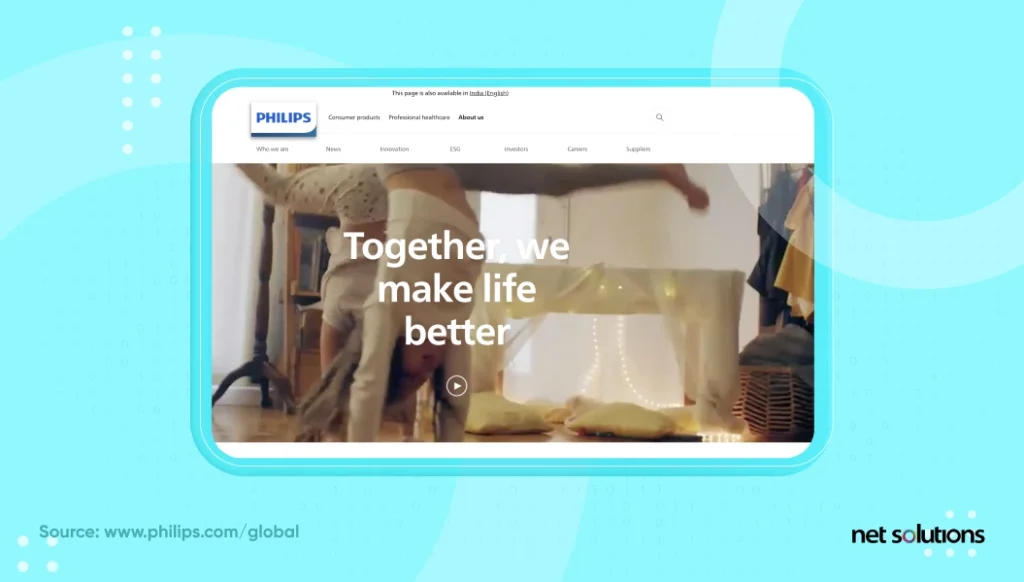
Royal Philips had release cycles averaging 18 months with its traditional development approach. However, with the SAFe approach, it reduced them to six months. Also, the feature cycle time was reduced from more than 240 days to fewer than 100.
4. LEGO Digital Solutions
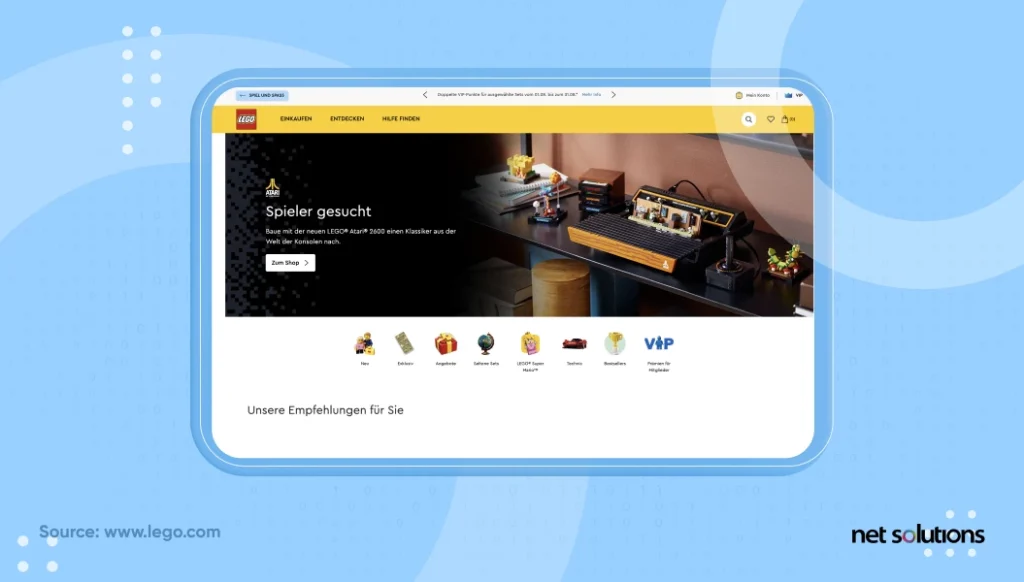
Lego digital solutions initially had five development teams that could collaborate easily. However, as they grew up to 20 teams, client collaboration, cross-team alignment, and release planning became challenging.
To address this issue, Lego Digital solutions implemented the SAFe framework and witnessed a significant reduction in duplicate work and dependency issues, fewer dependency issues, and enhanced planning, thus improving customer trust.
Strengths and Weaknesses of SAFe?
Like other agile approaches, SAFe has its pros and cons. Let’s look at them:
| Pros of SAFe | Cons of SAFe |
|---|---|
|
SAFe enhances the software development process while centralizing the decision-making. |
With its top-down approach, SAFe may resemble the waterfall approach that most businesses try to leave behind. |
|
SAFe extends agile beyond the front lines of software development to software leaders who must answer higher-level strategy questions. |
Compared to Scrum, which gives developers more freedom, SAFe requires administrative roles to oversee projects. |
|
It can easily handle a coordinated strategy with large teams for large-scale and complex projects. |
SAFe slows down processes and limits flexibility compared to an agile environment. |
|
SAFe helps teams maintain alignment with business goals |
The top-down approach of SAFe often creates siloes between developers, testers, and product owners and limits the ability to create quality software. |
|
SAFe’s top-down alignment and centralized decision-making ensure strategic objectives remain top of mind. |
SAFe often leads to longer planning cycles and more fixed roles, thus affecting the delivery time. |
|
With SAFe, you can set standardized processes across teams and avoid obstacles and delays that may pop up when different teams need to work together. |
SAFe requires a lot of planning and documentation, which can take a lot of your time that you could otherwise spend developing the software. |
When Should You Implement SAFe and When You Shouldn’t?
To understand if SAFe is the right approach for you, it’s also essential to know when and when not to use it.
| When to Use SAFe? | When not to Use SAFe? |
|---|---|
|
There are multiple dependencies between the agile teams. |
When your teams are implementing sprints at different speeds, i.e., your front-end team wants to go with 4-week sprints, but your design team wants to create 2-week sprints. |
|
Too many siloes exist between the development, testing, and business teams, making the feedback slow and inefficient. |
Your teams are entirely independent of each other. |
|
Stakeholders want more transparency around delivery, risks, and dependencies. |
Your entire organization has only 50-60 people. |
|
Your business strategy and IT delivery don’t align. |
You’re a startup that needs to adapt quickly to the rising market. |
|
You are a large corporation with operations spread across multiple geographies. |
You have just begun your agile journey and still need to get the hang of it. |
Frequently Asked Questions
The scaled agile framework (SAFe) is a scaling framework used for implementing agile at an enterprise level. On the other hand, Scrum is a framework based on agile values and principles. Besides, Scrum is only feasible for smaller and mid-sized organizations, while SAFe is implemented on a much larger scale.
Scrum, Kanban, and Extreme Programming (XP) are three commonly used agile frameworks for product development.
Scaled agile framework is neither push nor pull. The idea is to create a balance between both.
The Scaled Agile Framework® (SAFe®) is a set of organizational and workflow patterns for implementing agile practices at an enterprise scale. The framework is a body of knowledge that includes structured guidance on roles and responsibilities, planning and managing the work, and values to uphold.

